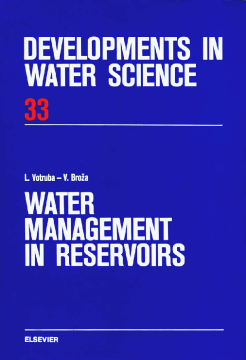
Additional Information
Book Details
Abstract
This book introduces methods for solving the technical and economic problems posed by water reservoirs, so as to ensure they have the best possible economic and social effect. The significance of reservoirs and the development of their function in water management is assessed, and they are classified according to origin and placing. Among the methods for solving the reservoir's function, both graphical and numerical procedures are described, based on the probability theory and mathematical statistics. In the explanation of the supply function of the reservoirs, attention is paid to the processing of hydrological data, the respective probability distribution is assessed, the theory of stochastic processes is explained, and methods of modelling the sequence of mean annual and monthly discharges are mentioned. The demands of consumers and the reliability of water supply are analysed. All types of reservoir discharge control are presented, i.e. multi-year, annual, short-term and compensation. A solution is given for the discharge control in reservoir systems and in special cases of water management, as well as in individual reservoirs. To describe the flood control function of reservoirs, hydrological data are evaluated, the precision of the flood regime characteristics is assessed, the flood routing in a reservoir is resolved, and the question of flood control is discussed. Control of a reservoir is ensured by a special space, as well as by utilizing the supply and overflow components of the reservoir.
A separate part is devoted to the water management operations of reservoirs, mentioning the rules for control of the discharge from reservoirs in permanent operation, mainly using central control, and for the study and evaluation of the water management function of reservoirs. The last part of the book describes solutions for new reservoir functions resulting from their incorporation into water management systems and their function in the environment. The basic types of water management systems are described, as well as conditions for their optimal operation. In a similar way, the distribution of investment and operation costs for the various parts of a complex water management project are discussed in detail, as well as the economic impact of the reliability of water supply and flood control. The physical, chemical, biological and social consequences of reservoirs and their significance in creating a cultural landscape are analysed.
The book is mainly intended for those who are involved in the development, preparation and operation of water management schemes and students of graduate and post-graduate courses in the field of water management.
